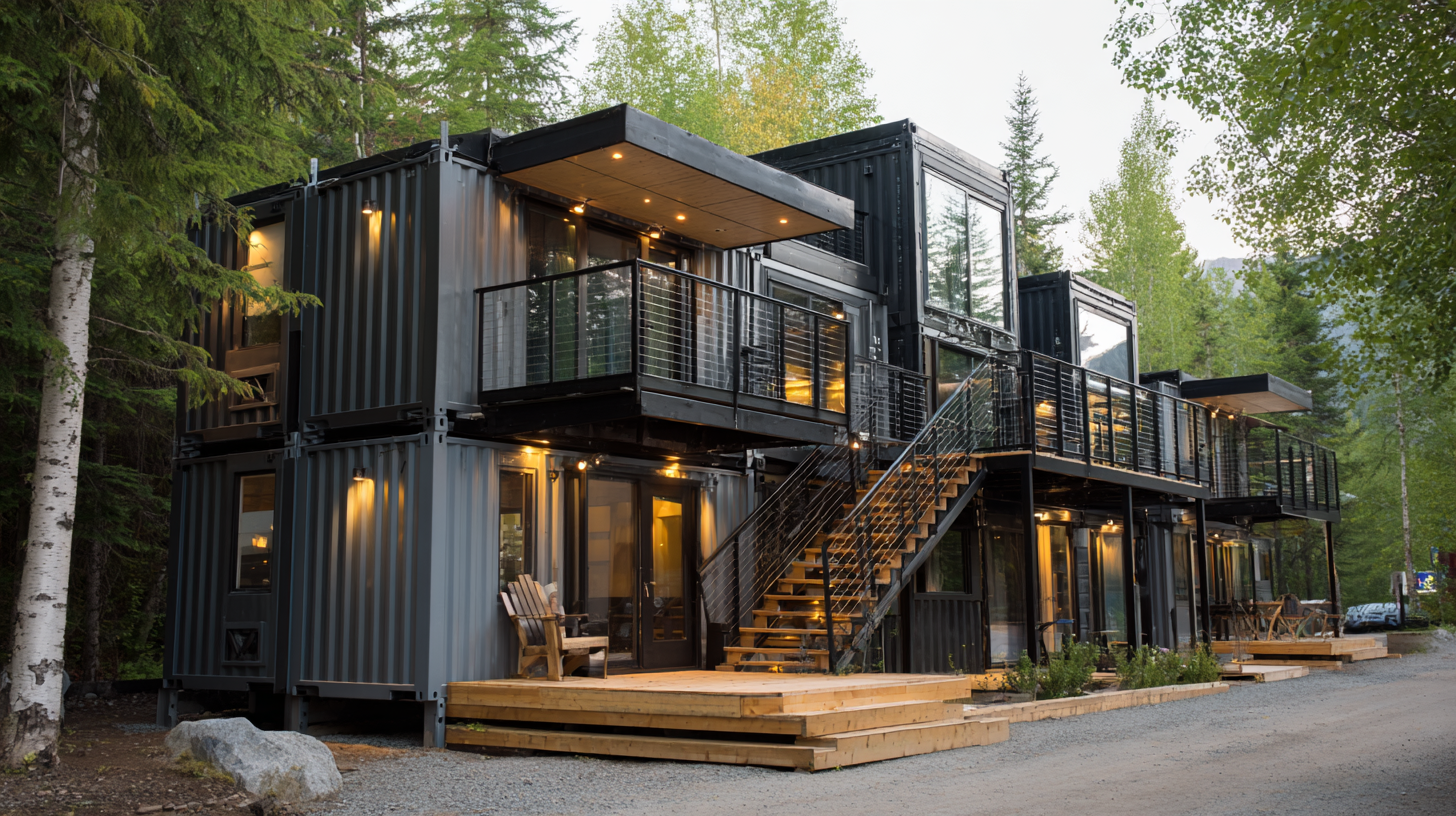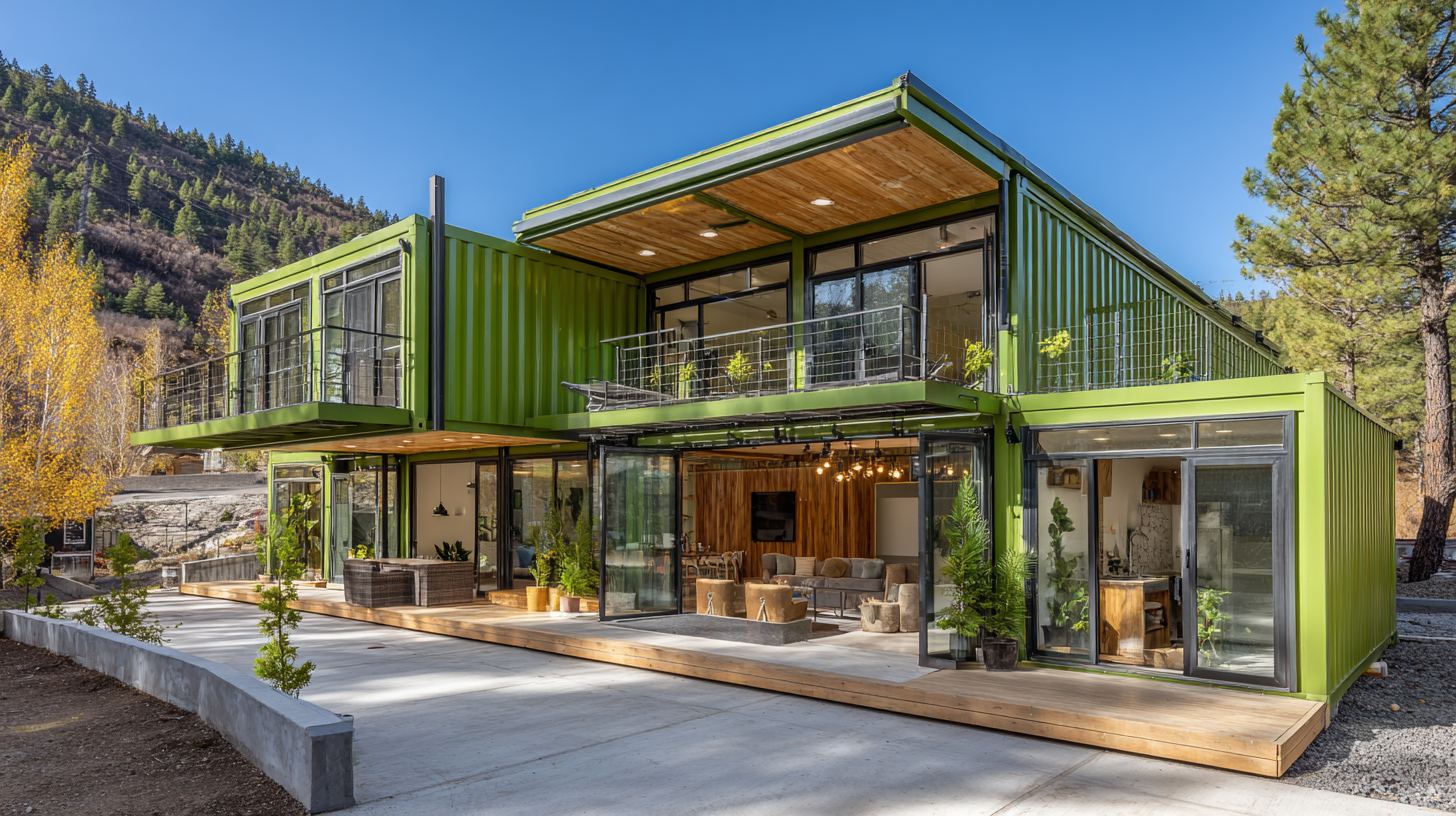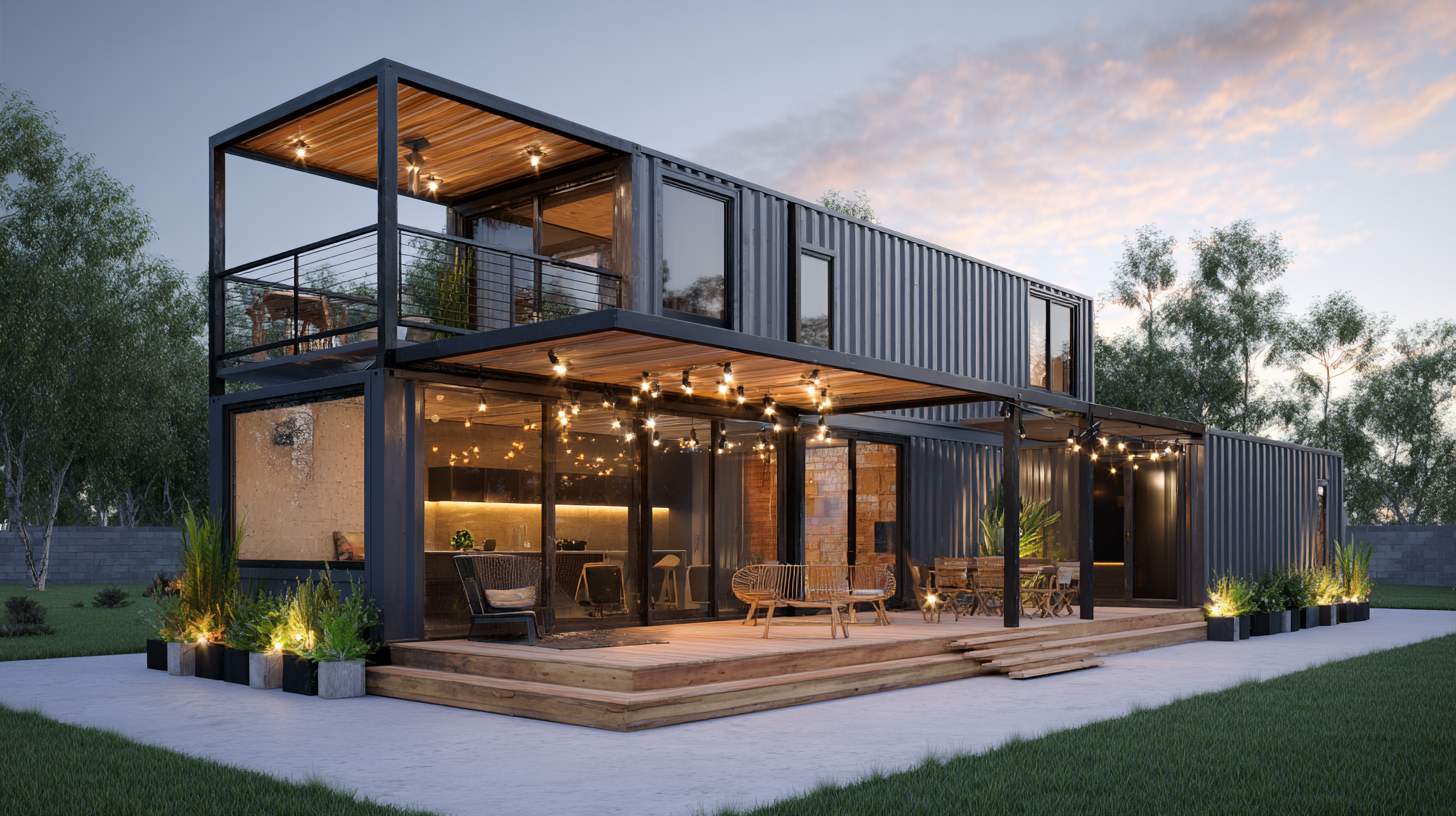As the world increasingly confronts pressing environmental challenges, innovative housing solutions are gaining recognition for their sustainability and efficiency. Among these, the concept of "Multiple Container House" solutions stands out as a viable alternative to traditional housing methods. A report by the Container Housing Association highlighted that the use of shipping containers for residential purposes can reduce carbon footprints by nearly 50% compared to standard construction methods. Additionally, the World Economic Forum indicates that the demand for sustainable housing is projected to grow by 20% over the next decade, driving the popularity of modular designs that optimize space and resources. By leveraging the adaptability and affordability of multiple container homes, individuals can contribute to sustainable living while enjoying the flexibility and modern aesthetics these innovative designs provide.

Multiple container house solutions are gaining traction as a sustainable living option, particularly in response to global housing crises. This innovative approach leverages shipping containers, transforming them into eco-friendly homes. According to recent industry insights, the use of container houses can reduce construction costs by up to 40% compared to traditional building methods. They can be rapidly deployed, addressing urgent housing demands, such as those seen in Ghana, where container homes are aiming to alleviate a significant housing shortage.
Not only are these structures quick to construct, but they also promote sustainable architecture by minimizing resource consumption and waste. A multidisciplinary assessment indicates that passive container houses enhance energy efficiency, which can lead to lower utility costs and carbon emissions over time. The adaptability of shipping containers allows architects to design compact yet functional living spaces, appealing to a growing trend towards minimalism and sustainable living. This trend is further supported by statistical data, which suggests that the global market for eco-friendly housing solutions is expected to grow by over 15% annually, spotlighting the crucial role that container housing can play in the future of residential construction.
The growing popularity of container homes as a sustainable living solution emphasizes the use of eco-friendly materials and energy efficiency. Container houses not only minimize the environmental impact but also present a unique opportunity to utilize recycling and repurposing. According to a report by the World Green Building Council, buildings account for approximately 39% of global carbon emissions, highlighting the critical need for more sustainable construction techniques. Choosing containers made from repurposed steel significantly reduces waste, as it transforms a once-abandoned structure into a functional dwelling.
 Maximizing energy efficiency in container homes is essential for promoting a sustainable lifestyle.
By incorporating energy-efficient appliances and utilizing passive solar heating, these homes can significantly
reduce utility costs. The U.S. Department of Energy states that energy-efficient homes can reduce energy
consumption by up to 30%. One effective tip is to install energy-efficient windows
that minimize heat loss during winter and reduce cooling loads in summer, further lowering energy consumption.
Maximizing energy efficiency in container homes is essential for promoting a sustainable lifestyle.
By incorporating energy-efficient appliances and utilizing passive solar heating, these homes can significantly
reduce utility costs. The U.S. Department of Energy states that energy-efficient homes can reduce energy
consumption by up to 30%. One effective tip is to install energy-efficient windows
that minimize heat loss during winter and reduce cooling loads in summer, further lowering energy consumption.
Furthermore, harnessing renewable energy sources, such as solar panels, can enhance the sustainability of container homes. A study by the National Renewable Energy Laboratory showed that installing solar panels could generate up to 80% of a household's energy needs, leading to substantial long-term savings. Consider integrating a green roof or living wall to improve insulation and air quality while promoting biodiversity.
The rising popularity of container houses is largely attributed to their affordability and cost-effectiveness, making them an attractive option for sustainable living. According to recent studies, the average cost of a traditional home can exceed $300,000, while shipping container homes can be built for as little as $10,000, significantly reducing the financial burden on homeowners. This price advantage stems from the use of recycled materials—disused shipping containers—which not only cuts down on construction costs but also promotes eco-friendly practices.
Container homes offer incredible flexibility in design and use. They can be easily modified, stacked, and relocated, providing solutions for a variety of living situations, from single-family homes to multi-unit dwellings. Industry reports indicate that modular construction methods, such as those utilizing container houses, can reduce building time by up to 50%, addressing the urgent housing shortages in urban areas. Moreover, as cities strive to become more sustainable, the versatility of container homes enables communities to adapt quickly to changing housing demands, thus reshaping the future of affordable housing.

The growing trend of container homes offers remarkable design flexibility and customization options, making them an appealing choice for sustainable living. According to a report from the Container Housing Association, the modular nature of shipping containers allows for a diverse array of configurations and layouts. Homeowners can stack, arrange, and modify shipping containers to create unique living spaces that cater to their personal preferences and lifestyle needs. This level of adaptability is particularly beneficial in urban areas where space is limited and creativity is essential to navigate zoning restrictions.
Furthermore, the customization options available for container homes can significantly enhance energy efficiency. A study conducted by the Green Building Council indicated that integrating eco-friendly materials and advanced insulation into container designs can reduce energy consumption by up to 30%. Homeowners have the choice to incorporate solar panels, green roofs, and rainwater harvesting systems, contributing to their sustainability goals while also minimizing their ecological footprint. The ability to tailor container homes in this manner not only maximizes their functional potential but also empowers individuals to participate actively in the global pursuit of sustainable living.
Living in multiple container homes offers a unique blend of community and lifestyle benefits that cater to the increasing demand for sustainable living solutions. These eco-friendly dwellings not only promote a sense of belonging among residents but also foster collaboration and resource sharing. Communities built around container homes often feature shared spaces that encourage interactions, making it easy for neighbors to connect, support one another, and cultivate a vibrant social network. This communal living style aligns well with emerging trends in modern housing, where affordability and sustainable practices are paramount.
Furthermore, the innovative design of these container homes allows for flexibility in living arrangements, which can adapt to the varying needs of residents. In areas like Roanoke College, solar-powered container dorms exemplify how container living can merge comfort with green lifestyles, providing students with fast and efficient housing solutions. This versatility not only addresses housing shortages but also encourages sustainable practices among residents by integrating green technology and minimizing the ecological footprint. As more individuals seek to downsize and explore alternative housing options, container communities stand out as attractive, sustainable choices that promote both an enriching lifestyle and environmental consciousness.
| Benefit | Description | Community Impact | Lifestyle Benefit |
|---|---|---|---|
| Affordability | Cost-effective housing solution through recycled materials. | Increases housing availability in communities. | Reduces financial stress on families. |
| Sustainability | Uses eco-friendly materials and construction practices. | Promotes environmentally conscious living in communities. | Encourages personal responsibility for the environment. |
| Modularity | Flexible design options to meet diverse needs. | Fosters community diversity and dynamic growth. | Allows for personalized living spaces. |
| Quick Construction | Shorter build times compared to traditional homes. | Addresses urgent housing needs in affected communities. | Less disruption to lifestyle during construction. |
| Community Building | Encourages collaboration among residents. | Strengthens social ties and community bonds. | Promotes a sense of belonging and support. |






